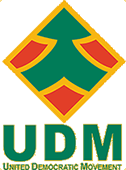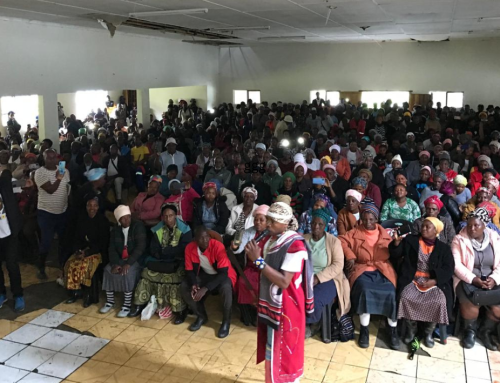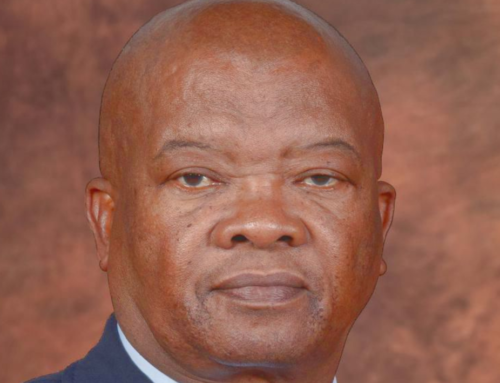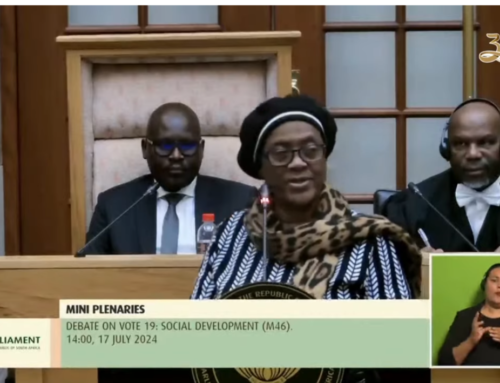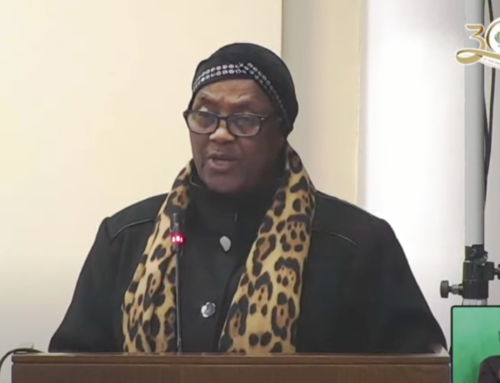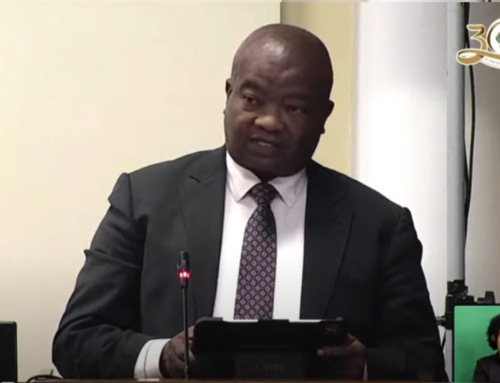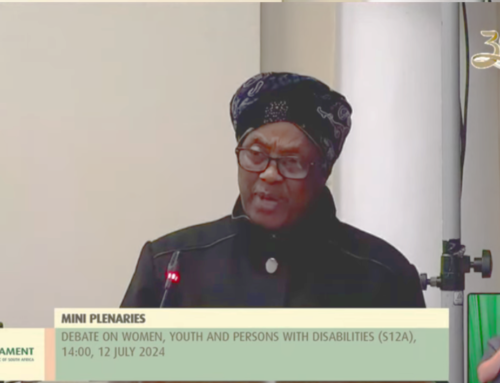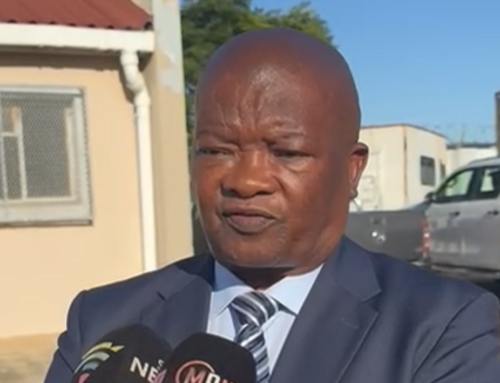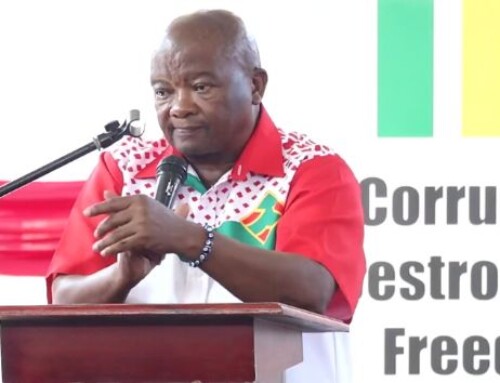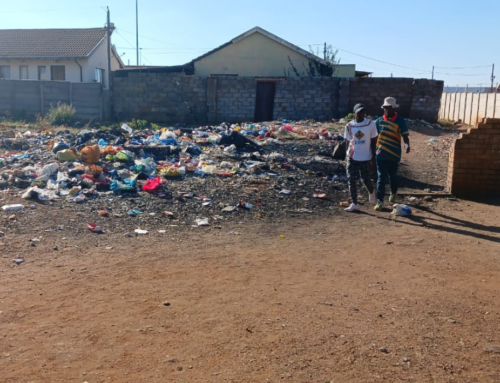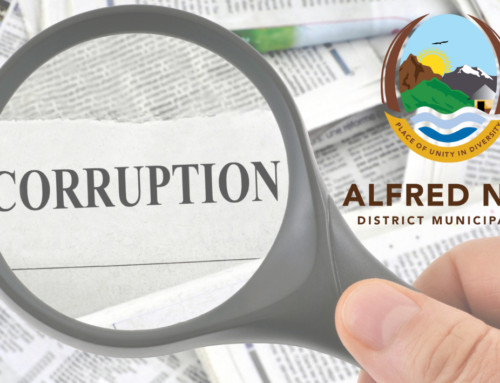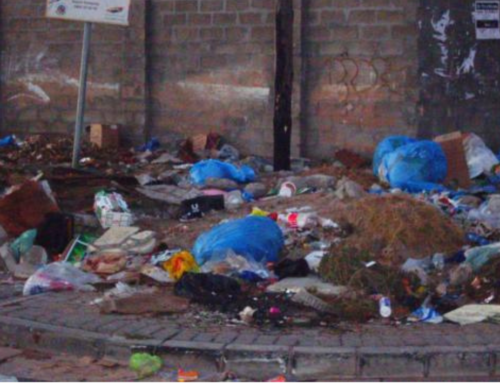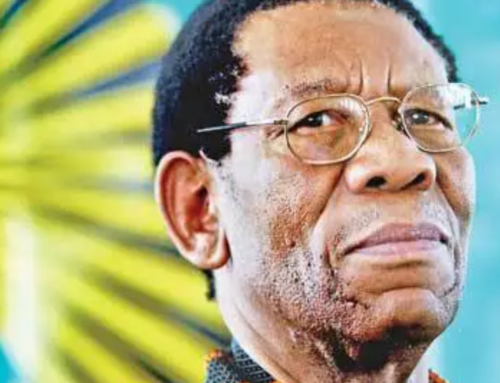Speaking Notes for Mr B Holomisa, MP and UDM President at a Public Community Meeting on the Expropriation of Land without Compensation: a National Assembly Resolution
• Chairperson
• Traditional, religious and community leaders
• Leaders of the UDM and our public representatives
• Ladies and gentlemen
1. Welcome
Thank you for accepting my invitation to this meeting. Today we will consider an issue of national importance i.e. the debate around the expropriation of land with or without compensation. I therefore welcome you and encourage you to participate in a robust debate!
As a citizen and a child of this region, it would be remiss of me to not inform and advise, where I am able, so that the land matter can be resolved in a peaceable manner and that no blood is spilt in the name of land; we have seen too much of that in the past.
2. Introduction and context
It has been 24 years since we attained political freedom and democracy, yet the issues of unlocking land and the economy remain unresolved.
The policies aimed at addressing these challenges have fallen short in the worst manner possible. Instead, the cord it stuck is evidenced by the amount of pressure that is exerted with civil protests and people saying: “We deserve better!”.
Some of you were part of the Convention for a Democratic South Africa (CODESA) negotiations. You will therefore know that the priority at the time was political freedom and bringing about a peaceful regime change.
The issue of land was therefore put on the backburner and has now been cranked up a notch or six. It has been brought to the fore, as one of the main talking points in the public discourse over the past year or so.
Although the constitution provides for government to give effect to land reform, as provided for under Section 25, too little progress has been made.
25. (1) No one may be deprived of property except in terms of law of general application, and no law may permit arbitrary deprivation of property.
(2) Property may be expropriated only in terms of law of general application
(a) for a public purpose or in the public interest; and
(b) subject to compensation, the amount of which and the time and manner of payment of which have either been agreed to by those affected or decided or approved by a court.
(3) The amount of the compensation and the time and manner of payment must be just and equitable, reflecting an equitable balance between the public interest and the interests of those affected, having regard to all relevant circumstances, including
(a) the current use of the property;
(b) the history of the acquisition and use of the property;
(c) the market value of the property;
(d) the extent of direct state investment and subsidy in the acquisition and beneficial capital improvement of the property; and
(e) the purpose of the expropriation.
(4) For the purposes of this section
(a) the public interest includes the nation’s commitment to land reform, and to reforms to bring about equitable access to all South Africa’s natural resources; and
(b) property is not limited to land.
(5) The state must take reasonable legislative and other measures, within its available resources, to foster conditions which enable citizens to gain access to land on an equitable basis.
(6) A person or community whose tenure of land is legally insecure as a result of past racially discriminatory laws or practices is entitled, to the extent provided by an Act of Parliament, either to tenure which is legally secure or to comparable redress.
(7) A person or community dispossessed of property after 19 June 1913 as a result of past racially discriminatory laws or practices is entitled, to the extent provided by an Act of Parliament, either to restitution of that property or to equitable redress.
(8) No provision of this section may impede the state from taking legislative and other measures to achieve land, water and related reform, in order to redress the results of past racial discrimination, provided that any departure from the provisions of this section is in accordance with the provisions of section 36(1).
(9) Parliament must enact the legislation referred to in subsection (6).
3. Taking ownership of the debate
The United Democratic Movement (UDM) is of the view that we, as a nation, have a golden opportunity to find an all-round beneficial solution.
As transformation and the economic emancipation of the majority of South Africans are moving at a snail’s pace, we have to realise that land ownership is central to this debate. Therefore, participation in the debate is not a “nice to have”, it is a “must have”.
Whilst understanding the necessity of the debate, we should not forget that land is a touchy issue; we must therefore take ownership of it as the solutions will not fall like manna from the heavens.
For example, the people of this region, who know their history, will recognise that in the late-seventies KD Mantizima made several territorial demands for the Transkei, which included east-Griqualand and some farmland around the Queenstown area. Pretoria denied this, which raised tensions between the Transkei and Pretoria and, as a result, Mantizima broke diplomatic ties with South Africa.
The sons and daughters of this region of the Eastern Cape, must do their homework and familiarise themselves with the historical boundaries of the area. The reason being that we must decide what claims should be laid where e.g. in terms of land to ideally to be used for foresting, agriculture, dwelling, etc. In addition, a decision must be made whether people are happy with the land tenure system?
Also, when discussing the land conundrum, one will be forgiven to think that we do not live in a unitary state, but more of a quasi-federal state. Because, when you hear the representatives of the various kingdoms speak they create the impression that the central government cannot tamper with “what is theirs”.
Boycotting this debate will also not lead us anywhere. For if any of us believes that this issue does not affect their futures, they are in for a rude awakening when other interest groups run with the ball.
This meeting is therefore very important so that we familiarise ourselves with the dynamics around the South African land issue so that the various stakeholders can contribute to the solution.
The UDM is on record saying that EWC must be addressed in terms of the following:
• Who exactly (individuals, companies and/or government) will be affected and how?
• How does food security and economic stability impact implementation i.e. does it prevent expropriation in specific circumstances, and what would those be?
• How will government handle rapid urbanisation and an ever-increasing need to make land available in cities and the concomitant denuding of rural communities and local economies?
• How will traditional leaders and rural communities be affected;
• How will entities such as the Ingonyama Trust be impacted?
• What will be the effect on the land tenure system?
• What would the position be on the sale of, in main, urban land to foreigners?
• How will the issuing of title deeds be sped up so that entrepreneurs may use them as collateral to secure capital for start-ups?
4. The EWC motion passed in the National Assembly
Today’s information session and discussion surround the National Assembly resolution on land expropriation without compensation (EWC).
The resolution reads:
“…with the concurrence of the National Council of Provinces (NCOP) instructs the Constitutional Review Committee to –
(a) review section 25 of the Constitution and other clauses where necessary to make it possible for the state to expropriate land in the public interest without compensation, and in the process, conduct public hearings to get the views of ordinary South Africans, policy-makers, civil society organisations and academics, about the necessity of, and mechanisms for expropriating land without compensation;
(b) propose the necessary constitutional amendments where applicable with regards to the kind of future land tenure regime needed;
(c) report to the Assembly by no later than 30 August 2018.”
The NCOP has concurred with this resolution and the constitutional review committee (CRC) has begun its mandated work.
The call for comments has already been opened and will close on 31 May 2018. South Africans from all walks of life, individually and collectively, can:
• Make written and/or oral presentations directly to the CRC via Pat Jayiya at (pjayiya@parliament.gov.za or 021-403-3661).
• Attend the public hearings for which a schedule will soon be released.
I encourage you to participate.
5. Putting the history in context
For approximately three centuries military conquest, colonial settlement and legislating have been standard methods to dispossess land. To compound matters this had a massive impact on the zoning of the non-white population.
These “tools” were used to subjugate a people and it relegated them – the next generation, and the next – to crushing poverty and economic slavery.
The repercussions that we face, is that young South Africans are up in arms about the land they feel would have made a stark difference to their lives.
6. The land question post-1994
Whilst the post-1994 history is also well documented, it is worthwhile to pause on it.
The negotiations at the CODESA, as well as the interim and the final constitutions, are (in part) what led to the current unhappiness – whether your political outlook is on the left or the right.
I however want to focus your attention on one matter i.e. that at CODESA the call to afford property rights constitutional protection, was met with a concomitant demand to address the fate of those whose property rights had been trampled on during the colonial and apartheid eras.
Understandably there had been demands to remedy dispossession going back to 1652, but the date upon which compromise was reached was the promulgation of the 1913 Natives Land Act.
This, as we all know, meant that the post-1994 remedies, would only apply to land dispossessed after that date.
6.1. The remedies written in legislation
For us to understand the dynamics of the position in which the country finds itself, we must consider the enactment, of the 1994 Restitution of Land Rights Act, as envisaged in the constitution, by the first democratic government. The act established a commission on the restitution of land rights and the land claims court.
The conditions for land restoration had been 1) the feasibility of restoration, 2) the provision of alternative state-owned land and 3) compensation.
The cut-off date for claims had been 31 December 1998, but parliament passed the Restitution of Land Rights Act in 2014 to reopen the lodgement of land claims for a period of five years, which means the ultimate closing date will be next year (2019).
One of the other two components for the land restitution is land redistribution, which seeks to acquire land and redistribute it to formerly disadvantaged communities. The second is land tenure reform, which seek to address insecure tenure because of racial discrimination.
6.2. What are some of the dynamics?
Land restoration has proven expensive; the willing-buyer/willing-seller policy has failed dismally and exhausted the public purse.
Without trying to turn my remarks into rehash of the obvious, we need to understand, and be on the same page, when discussing this complex issue; for example:
• Many black families lost their farming skills through dispossession, to no fault of the their own, many of whom who are to this day trapped in poverty and hunger.
• The nature of agricultural enterprise has changed dramatically in recent times and agricultural extension services, appear to be unavailable.
• Communities have grown in number since the original dispossession.
As illustrated above, there are many other factors to consider, but undeniably so, the racial overtone that exist when discussing land, emanates exactly from millennia’s worth of forcibly taking from one and giving it to the other.
The department of rural development and land reform released a land audit report in 2014 and in 2017. These reports confirm the skewed ownership of land as follows: 79% is in private hands, 14% is state owned; and 7% is unaccounted for.
This picture comes into sharp focus when one considers that, of the 79% land in private hands: blacks own 1%, coloureds 3%, indians 4% and whites 71%.
The national assembly appointed a high-level panel to assess the key legislations and the acceleration of fundamental change. The panel presented its report early in 2018 and found that:
• The pace of land reform has been slow;
• The development of policy and law has drifted away from its initial pro-poor stance and lacks a vision for inclusive agrarian reform;
• There are significant gaps, such as on tenure security, where legislation has not been passed, which putts the lives and livelihoods of many rural dwellers in peril; and
• The government interpretation of customary law, centred on traditional leadership and away from living customs, has added to insecurity.
The three reports, referred to above, confirm that the remedies post-1994 have all failed and that government has a lot to accomplish, in consultation with the people, to heal the wounds inflicted with land dispossession.
6.3. Taking stock of the status quo
There has been no fundamental change and movement on the patterns of land ownership and use.
• Many citizens have no title deeds and consequently are unable to use land as collateral to secure credit for socio-economic participation and development.
• Rural, townships and villages remain as they were post-dispossession. With only a few within the middle class making negligible progress.
This has resulted in the, almost forced, migration from the rural hinterland to the towns and cities, which themselves do not have sufficient infrastructure and capacity to handle this influx.
• The existing infrastructure, that was inherited from the apartheid government is the same as it was when created i.e. to accommodate a white minority, with some areas forcing non-white South Africans into segregated areas. Worse still is that, albeit that this was a grossly prejudicial system, this infrastructure fell into disrepair
post-1994.
• Town and spatial planning has therefore become inadvertent victims of the failure to reform land. And so, the water continues to ripple from the stone cast in the middle of the lake.
• Government, traditional leaders, other institutions and individuals are seemingly not engaging with the mechanisms of land management, resulting in a defective extension of residential areas.
• The current expropriation draft bill before parliament does not provide concrete solutions and rather creates more confusion as there are many grey areas. There is, for instance, no clarity on whether privately owned residential space can be expropriated.
6.4. On a knife’s edge
The land question is a serious societal matter which requires our collective mind, irrespective of what divides us.
The country is in fact balanced on a knife’s edge.
Exploiting the issue of land as a political football, is immoral and harks of days where extremism, warped nationalism, indoctrination and civil disobedience was at the order of the day.
It is of no use for either the far-left or far-right to use land as a scare tactic and as propagandist rhetoric to garner support. It just makes for a highly agitated and insecure people who distrust each other to the point where calm and reason is set aside.
6.5. What we all can agree upon
We can all agree on, and we have expressed our dissatisfaction, the slowness of the redistribution and restitution process, which resulted and/or exacerbated the triple challenges of 1) poverty, 2) unemployment and 3) inequality.
The UDM therefore believes in the necessity to consult with all people through meetings of this nature; to hear their fears and hopes; and to represent them in parliament and at other forums.
7. Why did the UDM vote in favour of the EWC motion
I want to explain why the UDM voted in favour of the motion on EWC on the 27th of February.
We did this because, the resolution is in line with our long-standing call for a national dialogue on the economy, with the land question at the apex of that dialogue.
It is in this context, that we are consulting with a wide range of stakeholders and communities; including our own members and structures. Armed with these views, we shall be able to convene a UDM national meeting to craft our submission to the CRC before the cut-off date.
I want to affirm that the UDM aligns itself of the constitution, but government has dismally failed to utilise it to the maximum.
The party is also of the view that the 1913 cut-off date provided for in section 7 is problematic. Simply put, we think that the cut-off date deprives those who have lost their land long before the Native Land Act.
We should also not lose sight of the fact that the Land Act was an important foundation for the long-term drive towards a white vision of a racially segregated South Africa.
In response to this painful history the UDM believes that land ownership must be dealt with fairly, and that the constitutional right to land ownership must be realised quickly and effectively so that it does not become a political football.
In this regard, the UDM policy position has four pillars which are:
• Land and nation building;
• Land and government as well as clean governance;
• Land and the economy; and lastly,
• Land and its role in housing and security of tenure.
7.1. Land and nation building
• In terms of nation building, equitable access to land is a vital tool to reaffirm that we are not only equal, but that we share equal ownership and responsibility for the future of our country.
• For those unfairly deprived of land, their constitutional right must translate into tangible proof that they are rightful citizens of the new democratic and united South Africa, free from the injustices of the past.
• This means that government must create an enabling environment to foster restitution or compensation for them, as clearly provided for in the constitution.
• For those who already, and in the future, own land it means that their right to property is protected by the constitution. It means that government may only expropriate land by balancing the interest of the public and the interests of those affected.
• In addition, government may only do so if the current owner is compensated with fair value, subject to mutual agreement or a decision of the court.
• These constitutional provisions lay the foundation for equitable land ownership in South Africa that, with proper implementation, can heal the wounds of the past.
• The failure of government to make sufficient progress on equitable land ownership deprives South Africans of a vital nation building tool and could in the long-run threaten the foundations on which the new South Africa is built.
• The current government is failing, and has been for the past 24 years, to deliver, due to a lack of proper and effective management and not because the constitution does not allow it to act.
The UDM therefore proposes that the process of equitable land distribution must be accelerated.
7.2. Land and government
• The UDM proposes that the continued administrative backlogs and red-tape that have existed for years must immediately be removed by a complete redesign of the department to accelerate the process of equitable land distribution.
• This will entail a complete overhaul of the department to increase capacity and efficiency and to focus it on the core function of land distribution and restitution.
• There is a large amount of land affairs offices and services running independently such as the offices of the surveyor-generals, deeds, land reform, the land restitution commission, as well as the numerous offices of the department of agriculture. A UDM government will realign these offices to ensure that resources are shared where possible to increase public access.
• The UDM will staff the department with dedicated officials, intent on making equitable land ownership a reality as quickly, effectively and as fairly as possible.
• In addition, recognising that the department receives less than one percent of the national budget, its budget will be restructured to earmark a greater portion for the express purposes of equitable land distribution, to give immediate attention to the existing backlogs.
• Furthermore, a UDM government will enact legislative amendments where it may be necessary to remove cumbersome administrative requirements that delay processes.
• Large tracts of idle government land can be sold. A UDM government will accelerate the sale of this land to generate funds with the aim to encourage local ownership.
7.3. Land and the economy
• The UDM recognises the ability of land to create wealth. It proposes planned sustainable development programmes intended to provide communities with the necessary infrastructure to make them economically and socially viable.
• These programmes will be driven by a UDM government through the public works department, in coordination with all other relevant authorities, and will focus on job creation through infrastructure delivery.
• The UDM’s idea of planned sustainable development is aimed at promoting domestic-led growth and the upliftment of South Africans, especially those who are economically marginalised.
• The equitable ownership of land is vital for the success of the UDM-proposed planned sustainable development programmes. Such programmes also entail that government acquires, or assists communities to acquire, land for development.
• Furthermore, land tenure and deeds of ownership is key to giving people access to finance. This means that people are directly empowered to enter the formal finance and banking sectors to obtain credit with their property serving as collateral.
• The UDM believes that it is vital that access to land for collateral must be preceded by infrastructure development or upgrading, since the lack or disrepair of infrastructure (especially in rural areas and informal settlements) negatively affects the value of any land.
• In rural areas, the UDM proposes to accelerate the sale of suitable state-owned land to encourage local ownership for emerging and small commercial farmers to create jobs. Making land productive will require, not only a shift in land access, but also support with financial management, access to markets, as well as expertise and skills training.
7.4. Land and its role in housing and security of tenure
• The UDM recognises that all basic human needs culminate in proper shelter. It is the cornerstone of service delivery. For this reason, housing plays a central role in our planned sustainable development programmes.
• The slow pace of providing well-located land is hampering development and is stifling housing delivery. In fact, the process of providing well-located land for housing purposes is generally disastrous and too slow.
• Our planned sustainable development programmes will specifically focus on empowering communities and local government to deal with the need to identify and acquire land for development and housing.
• Secure tenure for homeowners is fundamental to any planned sustainable development programme. This will go a long way to reduce the risk of evictions and easier provision of essential services to communities.
• In urban areas such programmes will maximise the housing for
low-income families to provide for a decent-sized plot of land per housing unit, and to cater for future expansion of houses.
• The UDM believes that the people must be empowered to house themselves by building their own homes, and in such cases, government has a responsibility to identify suitable land and provide the necessary infrastructure.
• The UDM further proposes that recognition must be given to all forms of tenure, including communal tenure systems practiced in rural communities.
We believe that there is enough room within the framework of the law that provision can be made for individual title deeds within a communal land tenure system.
However, the UDM proposes that the current system must be reviewed in consultation with the affected communities and traditional leaders through a UDM-proposed presidential council on planned, sustainable development to ensure that any changes fit into the UDM’s proposal of planned sustainable development.
Such consultation will focus on and cater for future development, as well as the use of, and payment for, future infrastructure and services.
• Rapid land reforms targeted at urban and semi-urban communities must be urgently implemented. Government must speedily release land in its custody for planned sustainable development programmes to house the homeless.
8. Conclusion
An appropriate response to the more than three centuries of land dispossession, the 105 years of the Native Land Act demand, not only, discussion of the entire history of land dispossession and land reform, but also a much wider ranging debate on how to forge a substantive common citizenship.
Thank you.


